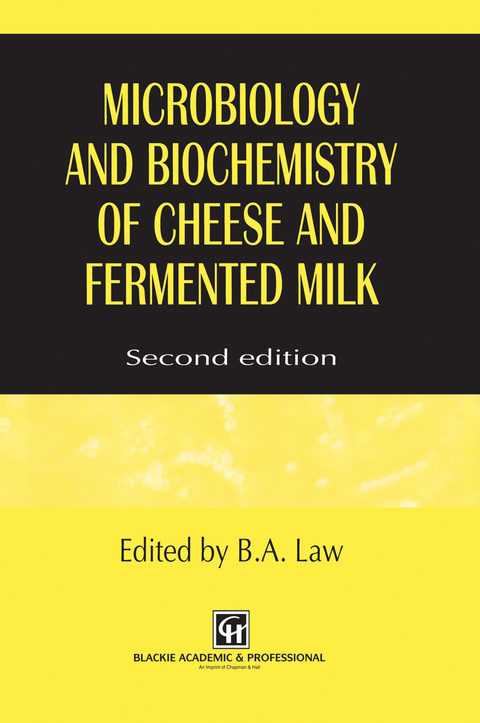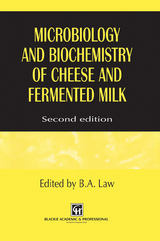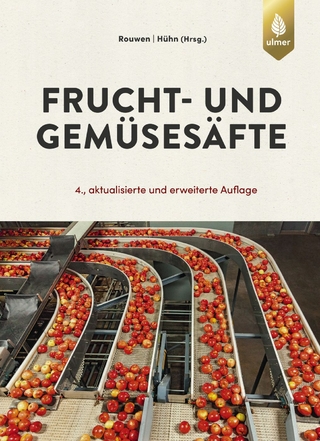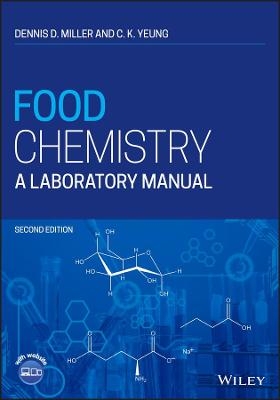Microbiology and Biochemistry of Cheese and Fermented Milk
Chapman and Hall (Verlag)
978-0-7514-0346-6 (ISBN)
1 Rennets: their role in milk coagulation and cheese ripening.- 1.1 Introduction.- 1.2 The milk protein system.- 1.3 Primary phase of rennet action.- 1.4 Rennet and rennet substitutes.- 1.5 Immobilized rennets.- 1.6 Factors affecting the hydrolysis of k-casein.- 1.7 Secondary (non-enzymatic) phase of coagulation and gel assembly.- 1.8 Curd tension and gel syneresis.- 1.9 Industrial manipulation of rennet coagulation time.- 1.10 Proteolysis during ripening.- 1.11 Proteolytic agents in cheese.- 1.12 Significance of secondary coagulant proteolysis.- 1.13 Specificity of chymosin and rennet substitutes in cheese.- 1.14 Specificity of indigenous milk proteinases.- 1.15 Proteolytic enzymes from microorganisms in cheese.- 1.16 Characterization of proteolysis in cheese.- 1.17 Influence of chymosin on rate of cheese ripening.- 1.18 Possible future developments.- 1.19 References.- 2 Classification and identification of bacteria important in the manufacture of cheese.- 2.1 Introduction.- 2.2 Molecular phylogeny as a basis for bacterial taxonomy.- 2.3 Current classification of cheese bacteria.- 2.4 Taxonomy in relation to safety and technology of dairy bacteria.- 2.5 Conclusions.- 2.6 References.- 3 Microbiology and technology of fermented milks.- 3.1 Introduction.- 3.2 Microbiology of fermented milks.- 3.3 Fermented milks with lactic acid.- 3.4 Fermented milks with alcohol and lactic acid.- 3.5 Fermented milks with mould and lactic acid.- 3.6 Concentrated fermented milks.- 3.7 Conclusions.- 3.8 References.- 4 Physiology and biochemistry of fermented milks.- 4.1 Introduction.- 4.2 Carbohydrate metabolism.- 4.3 Nitrogen metabolism.- 4.4 Pathways leading to flavour compounds.- 4.5 Polysaccharide secretion.- 4.6 Therapeutic properties of fermented milks.- 4.7 Conclusions.- 4.8 References.- 5 Flavour and texture in soft cheese.- 5.1 Introduction.- 5.2 The flora of surface mould-ripened cheeses.- 5.3 Biochemical reactions involved in soft cheese ripening.- 5.4 Aroma development.- 5.5Textural development.- 5.6 Controlling the defects of surface-moulded cheeses.- 5.7 References.- 6 Flavour and texture in low-fat cheese.- 6.1 Introduction.- 6.2 Role of fat in cheese.- 6.3 Consequences of measures taken to slow down syneresis.- 6.4 Casein breakdown in reduced-fat cheese.- 6.5 Use of enzymes and bacteria to improve quality of reduced-fat cheese.- 6.6 References.- 7 Control and enhancement of flavour in cheese.- 7.1 Introduction.- 7.2 Strategies used for the enhancement of cheese flavour.- 7.3 Enzymes release from cheese microorganisms.- 7.4 Flavour enhancement in non-conventional cheeses.- 7.5 Economic aspects.- 7.6 Future perspectives.- 7.7 References.- 8 The chemical and biochemical basis of cheese and milk aroma.- 8.1 Introduction.- 8.2 Isolation and identification of volatiles from dairy products.- 8.2.1 Tower extraction.- 8.3 Quantitative estimations.- 8.4 Aroma compounds in cheese and fermented milks.- 8.5 Some less-common cheese varieties.- 8.6 Cheese with highlinoleic acid content.- 8.7 Enzyme-modified cheese.- 8.8 Off-flavours.- 8.9 Conclusions.- 8.10 References and bibliography.- 9 Proteolytic systems of dairy lactic acid bacteria.- 9.1 Introduction.- 9.2 Milk as a growth medium.- 9.3 Proteolysis.- 9.4 Conclusions and topics for further research.- 9.5 References.- 10 Molecular genetics of dairy lactic acid bacteria.- 10.1 Introduction.- 10.2 Genetics of industrially relevant traits.- 10.3 Gene cloning techniques.- 10.4 Whole genome analysis.- 10.5 Future prospects.- 10.6 References.- 11 Sensory evaluation of dairy flavours.- 11.1 Introduction.- 11.2 Sensory mechanisms.- 11.3 Panels for sensory analysis.- 11.4 Flavour release and perception.- 11.5 Cheese.- 11.6 Yoghurt.- 11.7 Ice-cream.- 11.8 Conclusions.- 11.9 References.
| Zusatzinfo | XVIII, 365 p. |
|---|---|
| Verlagsort | London |
| Sprache | englisch |
| Maße | 155 x 235 mm |
| Themenwelt | Technik ► Lebensmitteltechnologie |
| Weitere Fachgebiete ► Land- / Forstwirtschaft / Fischerei | |
| ISBN-10 | 0-7514-0346-6 / 0751403466 |
| ISBN-13 | 978-0-7514-0346-6 / 9780751403466 |
| Zustand | Neuware |
| Haben Sie eine Frage zum Produkt? |
aus dem Bereich




